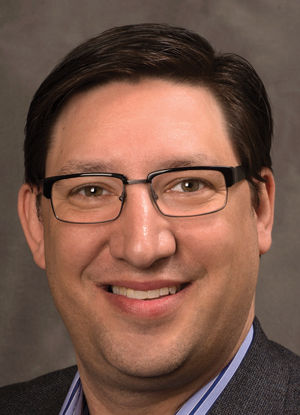Babi Yar visit is a searing reminder of Shoah in Kiev, Ukraine
Published August 2, 2017
What is your first Jewish memory?
That is a question I was recently asked and asked of others while on a trip. I was privileged to visit Kiev, Ukraine with Tim Stern, vice chairmain of the Jewish Federation of St. Louis Board of Directors and annual campaign chair. We were with other Federation leaders from around the United States.
During this trip, we experienced several of the programs that our Federation and other Federations and donors fund in the Ukraine and throughout the former Soviet Union. We made a visit to Semach, a home-bound senior, who lives with his developmentally-challenged nephew, on a pension of approximately $145 per month. He can live a life with some sense of dignity only because our overseas partner, the American Joint Distribution Committee, helps him by providing homecare assistance so he can eat, be bathed and get his medication.
ADVERTISEMENT
We also visited Babi Yar, a ravine in a park in Kiev, where on September 29, 1941, 33,711 Jews (yes, there are records) were stripped of their belongings, their clothes and then murdered in the ravine. We said a memorial prayer and heard reflections from some Jewish teens of Kiev. This park is an easy walk from the center of the city. If you need a picture… think Forest Park.
We spent an inspiring day at a summer camp for Jewish teenagers run by another overseas partner, the Jewish Agency for Israel. We did the “typical camp activities” — we danced (even me), sang, played games, ate. The highlight was talking to the teen campers and the 20-something counselors.
Someone suggested that I ask my new friends about their first Jewish memory. The question struck me as odd. My first Jewish memories are my first memories. The lullabies my parents sang to me, the Shabbat and holiday dinners with family, learning how to read the Hebrew alphabet. But I went with it and did so.
One young woman told me that her first Jewish memory was two years ago when her mother told her that she would be going to a week-long camp. The young woman had no idea what the camp was but figured, why not. As she got off the bus she was joyously welcomed by the counselors who told her then that she is Jewish. Until that point, she did not know that she is Jewish. Now, she yearns to learn more and is looking forward to going to Israel on Birthright. (The previous day, we met about a dozen young Ukrainians, all of whom would be making aliyah — moving to Israel — within the upcoming two weeks; they are all there now.)
ADVERTISEMENT
Our family in Ukraine has lost its memory; its Jewish traditions. For so many decades under Soviet rule, they were prevented from living their lives as Jews. They did not celebrate holidays, learn our history and talk about our forefathers and foremothers. But, Judaism is undergoing a renaissance in Ukraine — and in other areas of the former Soviet Union. Young people are seeking something beyond themselves for meaning and inspiration.
In one of his essays on the Passover Haggadah, Rabbi Jonathan Sacks has written: “There is a profound difference between history and memory. History is his story — an event that happened sometime else to someone else. Memory is my story — something that happened to me and is part of who I am. History is information. Memory, by contrast, is part of identity. I can study the history of other peoples, cultures and civilizations. They deepen my knowledge and broaden my horizons. But they do not make a claim on me. They are the past as part. Memory is the past as present, as it lives on in me. Without memory there can be no identity.”
For some Babi Yar is part of history. For me, Babi Yar was — even before I ever visited Kiev — part of my memory. The exodus from Egypt that we relive each and every Passover is part of my memory. For the Jews of Ukraine, these have been part of history and only now are they developing into their memory. I am so proud of the work of our overseas partners that helps the Jews of Ukraine build their individual memories and recreate their collective memory. While it may not be amongst my earliest Jewish memories, one of my favorite Jewish memories is seeing the young Jews of Ukraine reconnecting with their peoplehood.

















